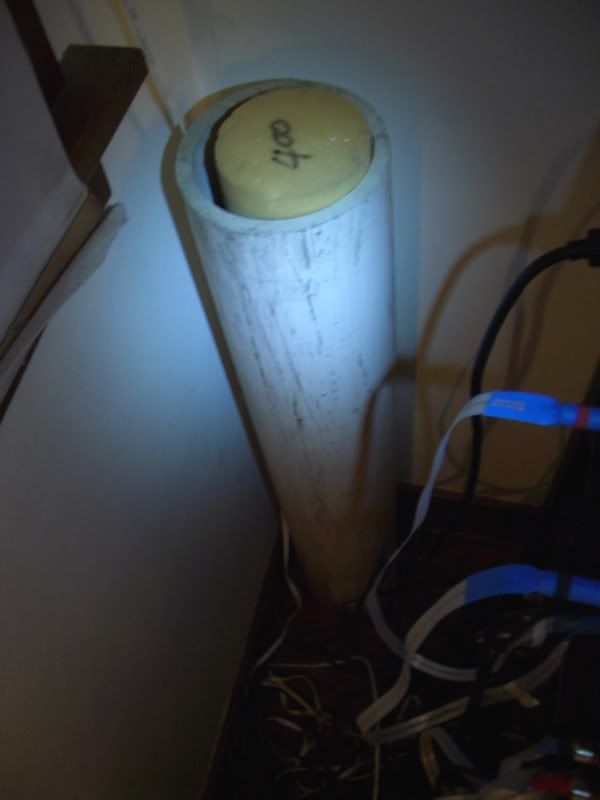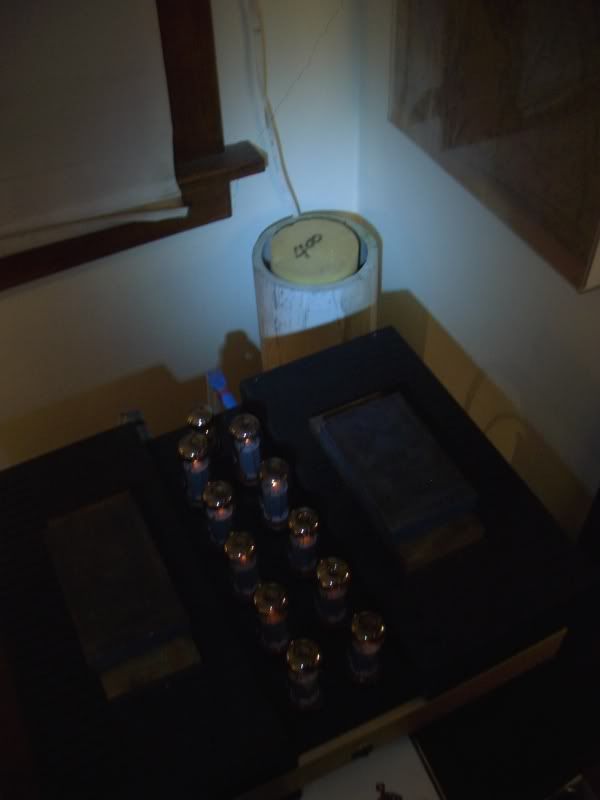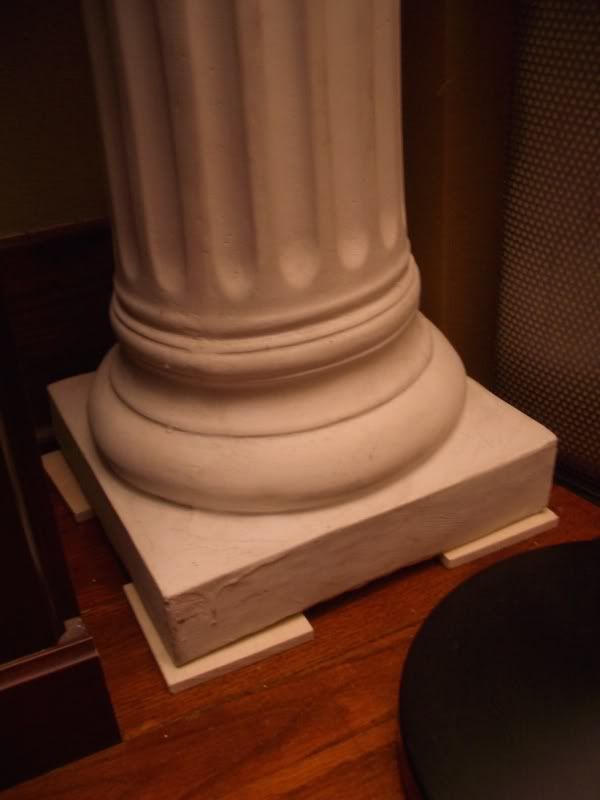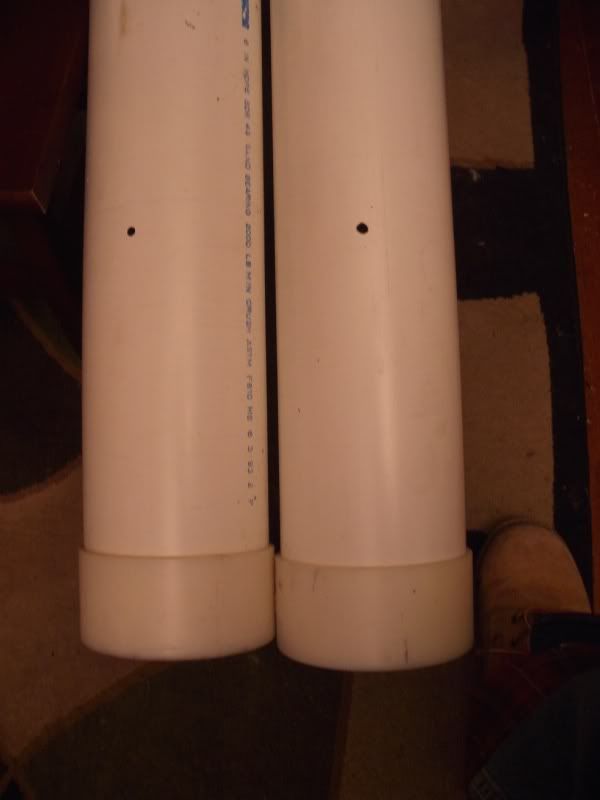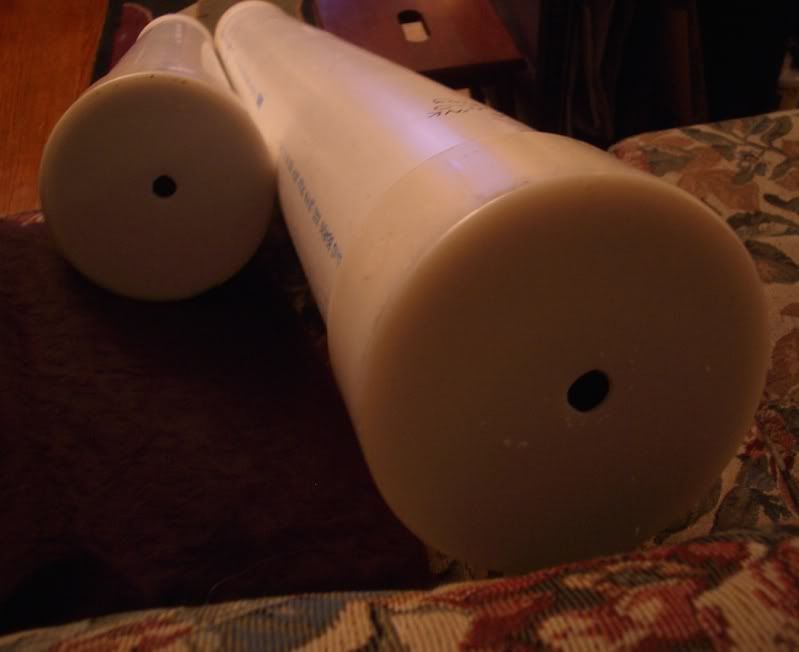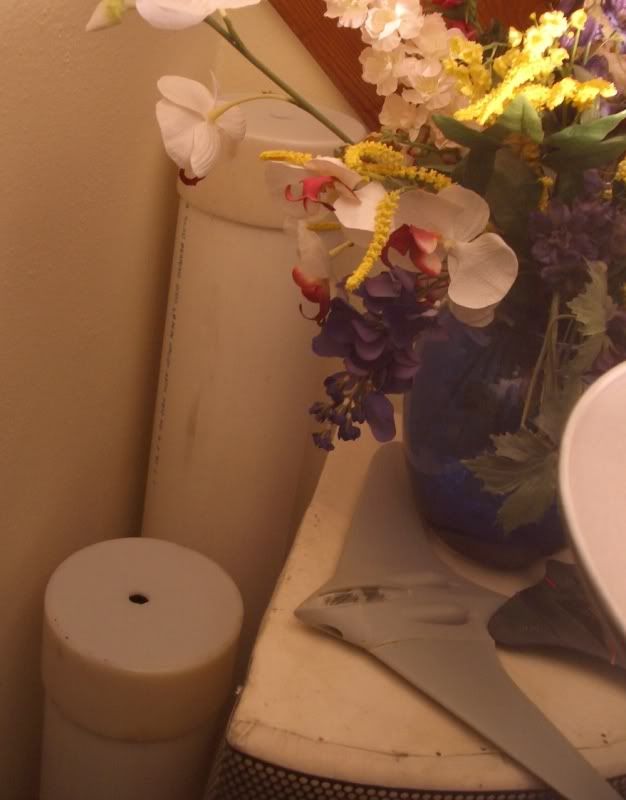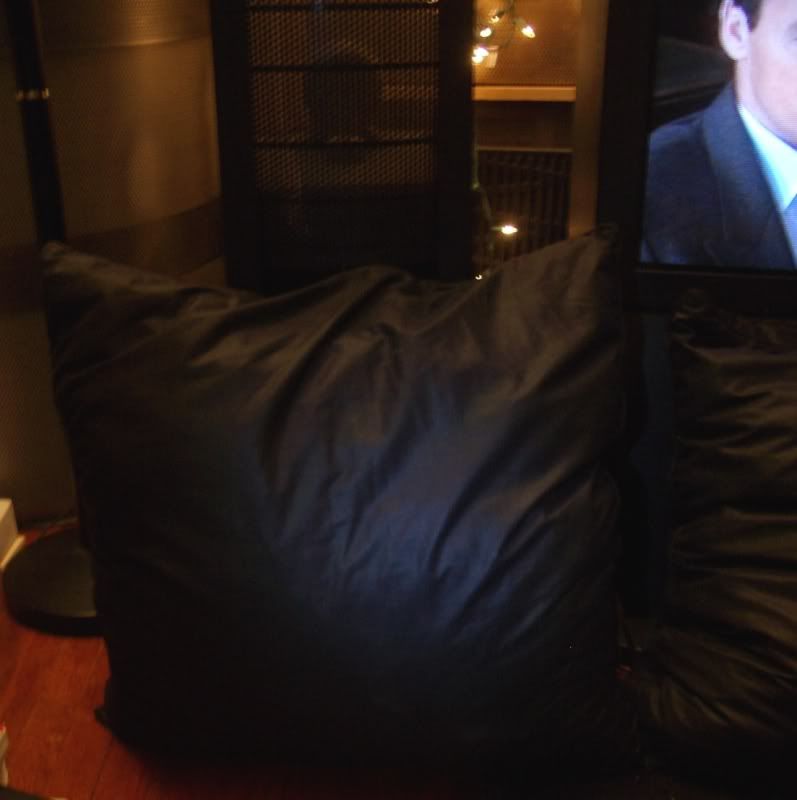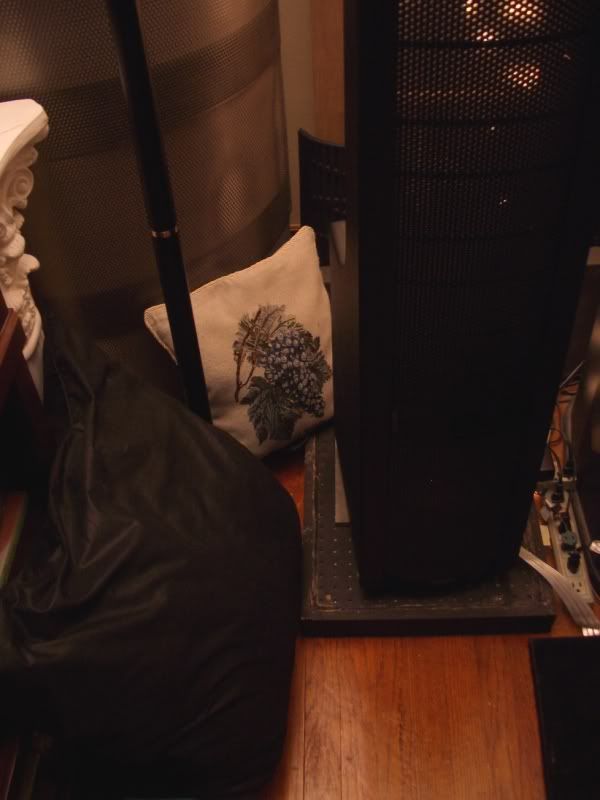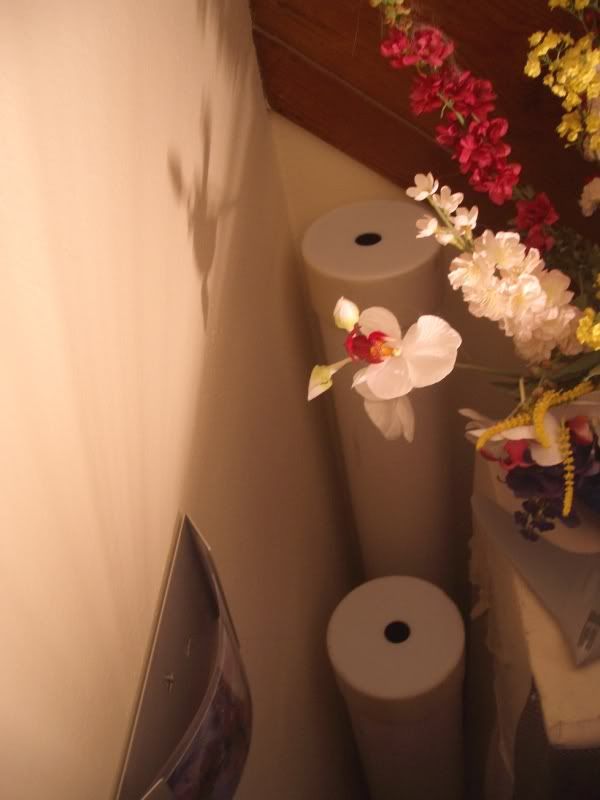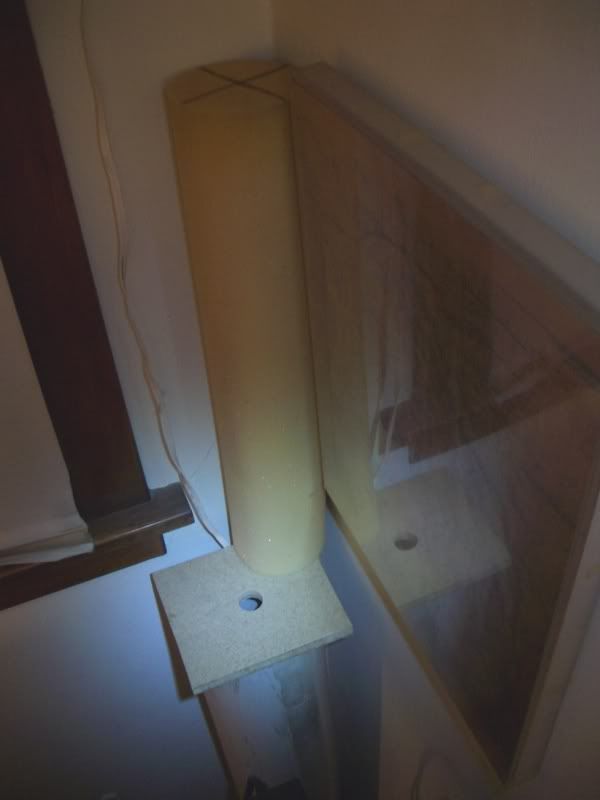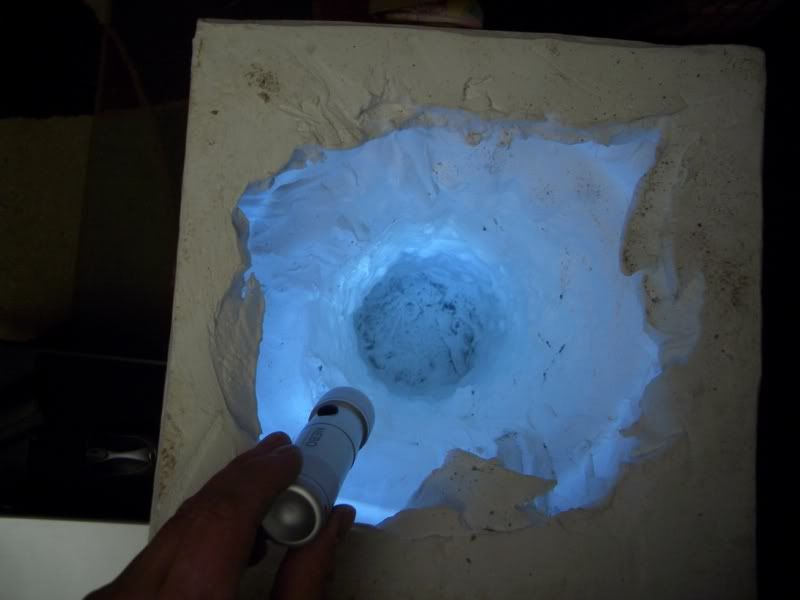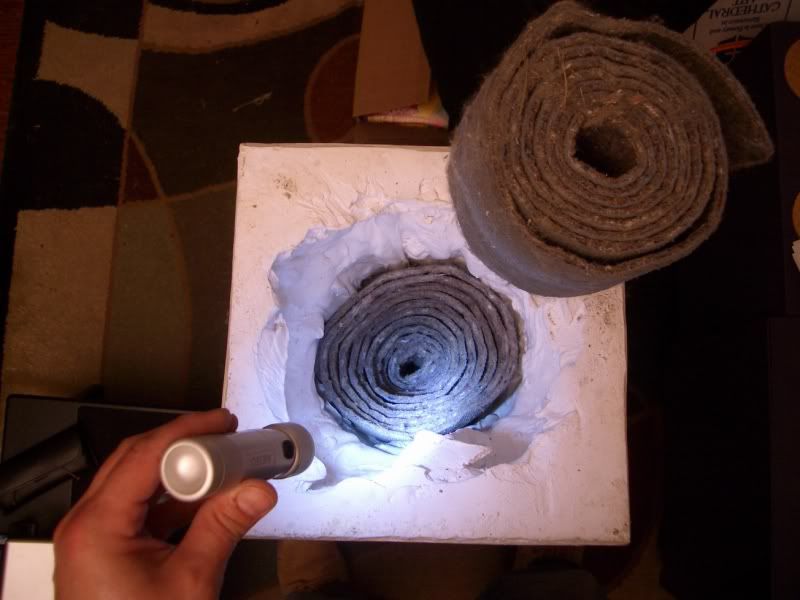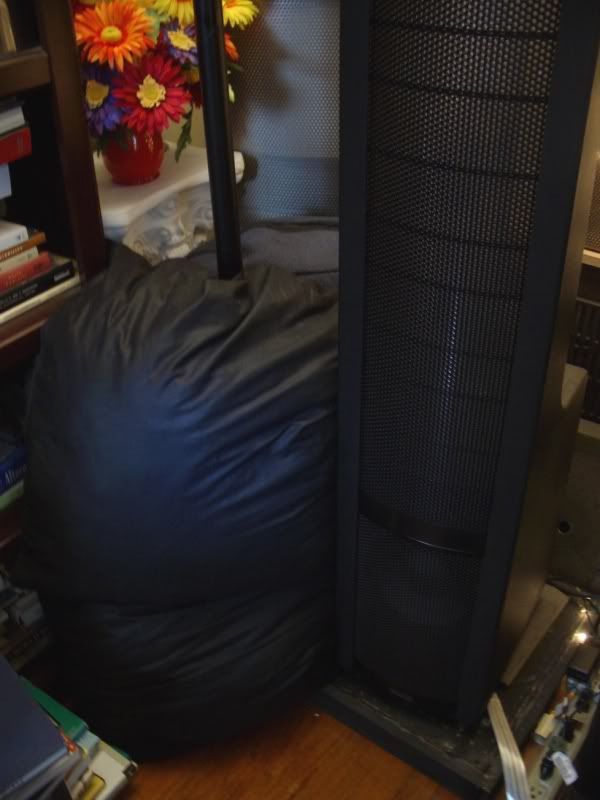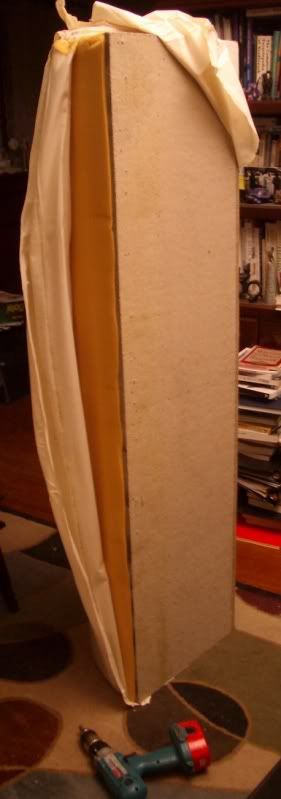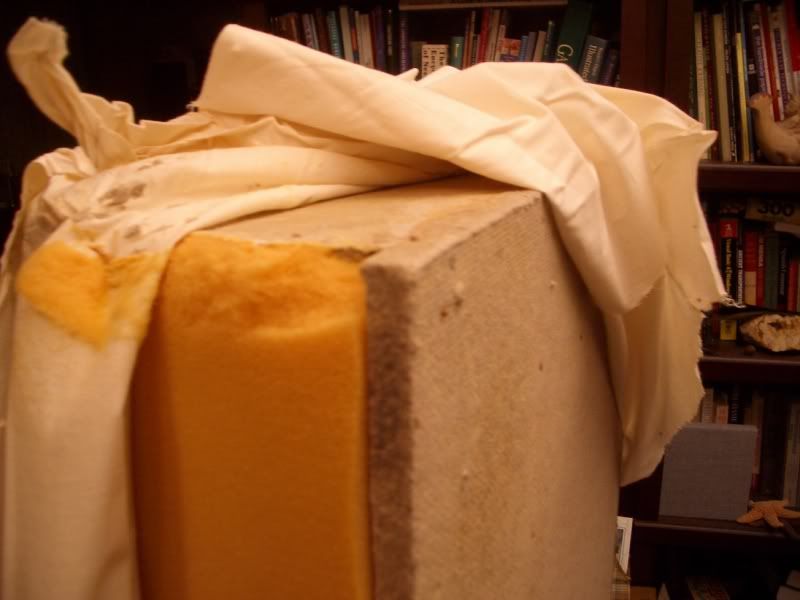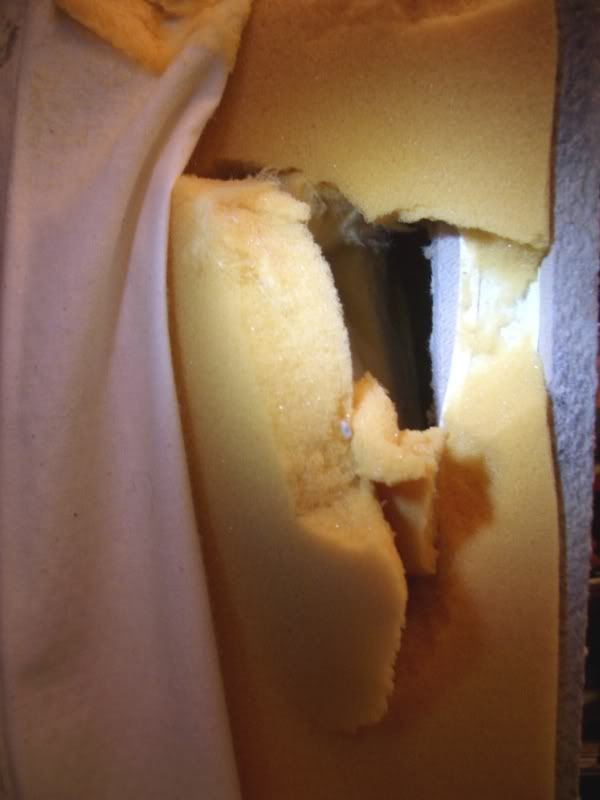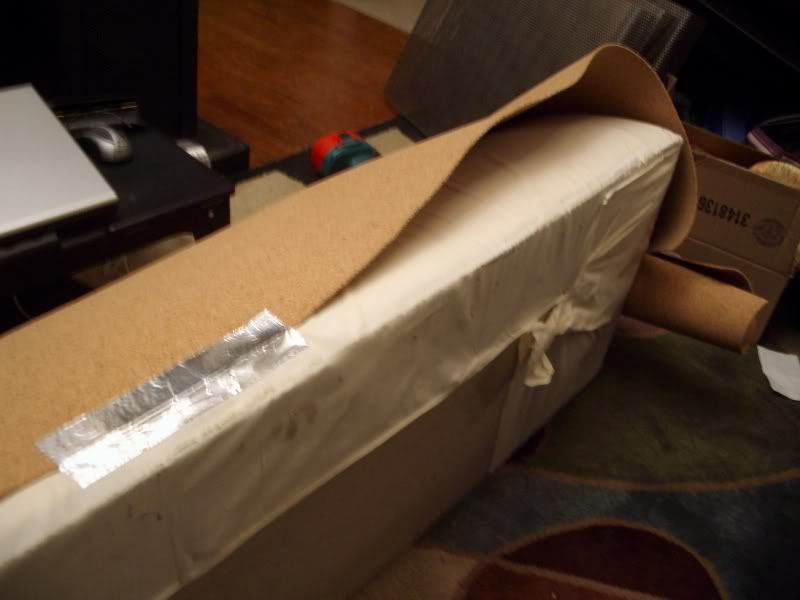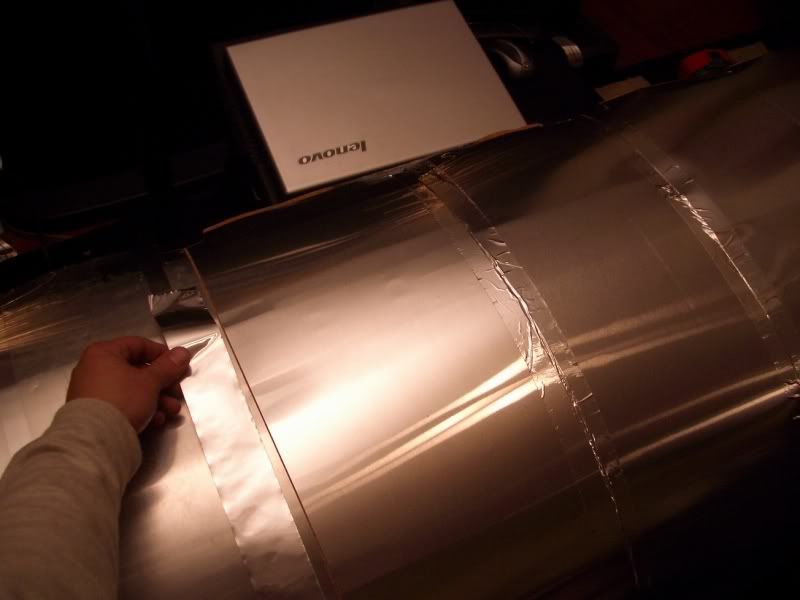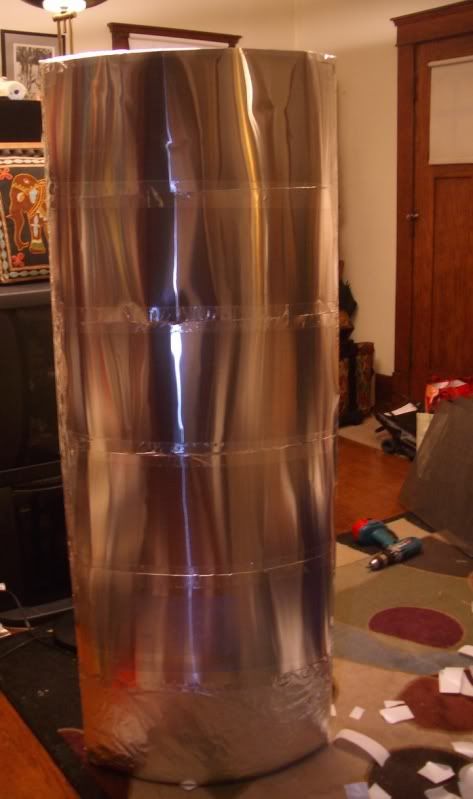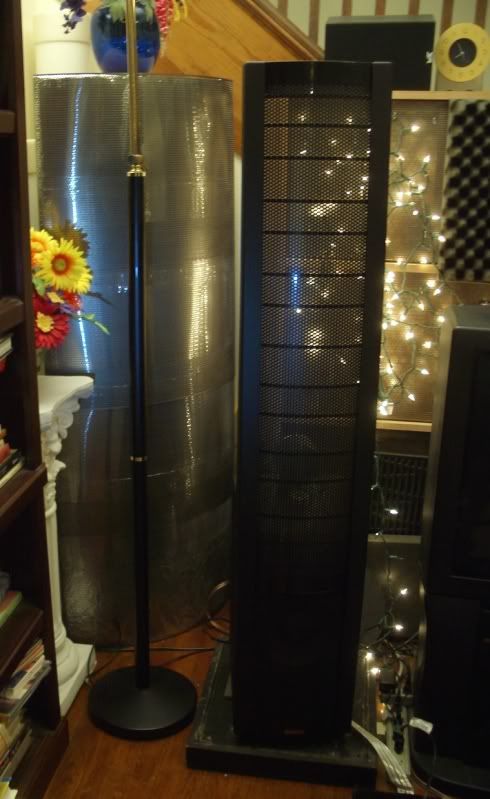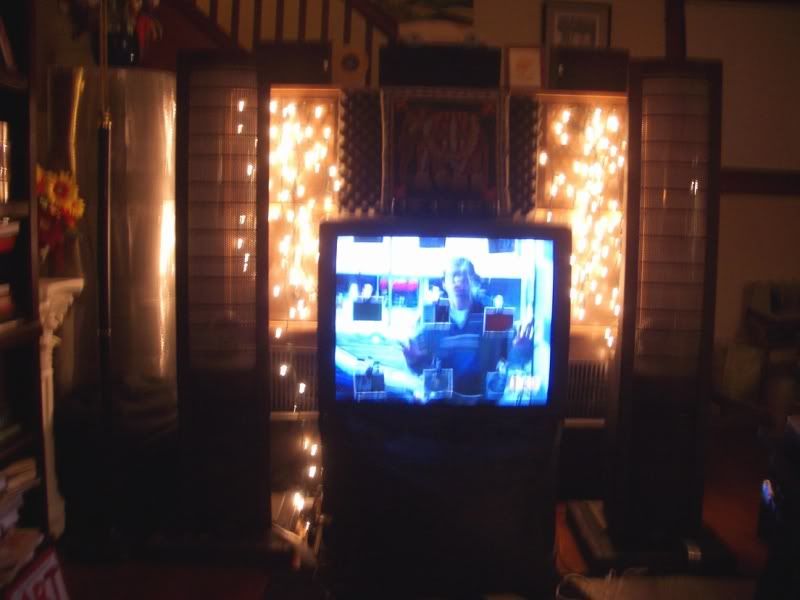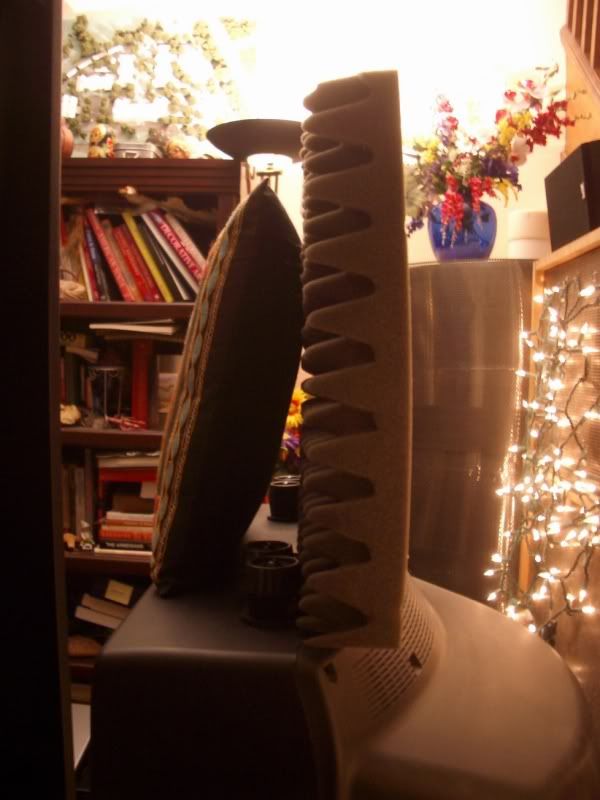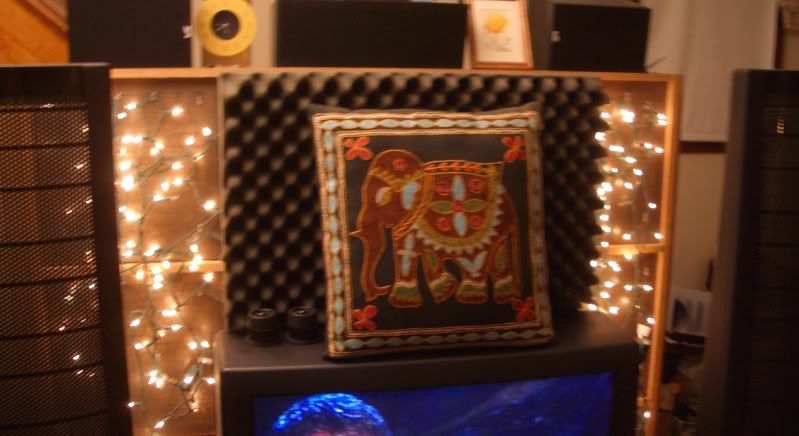Bass trap tubes - need help & ideas
The Situation
I have a problem with bass, not a bad one, lived with it for years, but I want to do something about it. The right speaker is in the middle of the room, the left in the corner. Stick my head in the left corner and it's bass rich, like my head is inside of a subwoofer.
The Parts
I've collected some PVC tubes, the two tall 6 inch diameter ones are medium thick/thin PVC, the tallest one is about six foot eight tall.
The end caps on the two tall tubes do not come off.
The shortest tube is 7 inch in diameter, fiberglass reinforced very thick and heavy but has some cracks in it near the ends.
In the Room
The quarter round absorber you see in the left corner is more of a diffuser. It is filled with fiberglass batt insulation, open front face, fabric covered with a layer of perforated metal over the fabric. The rear face is covered with 1/2" homasote fiberboard.
The Concept
The concept of a bass trap as I understand it is to allow long up to three foot wavelengths of bass energy into a hole or slot which opens up into a larger cavity. The wave of energy bounces around losing it's energy, and most of it cannot escape back out through the small hole or slot.
The Plan....pending your input
I plan to drill a 1/2" hole or larger in the top end of the two tall tubes. Then drill a 1/4" near the bottom in the side. Through this hole I will spay a modest amount of expanding spay insulation, to fill the lower 6-8 inches of the tube.
The short fat tube will be capped with some MDF plugs (glue, screw and caulk). A 1/2" hole in the top plate, near the bottom plate an entry hole for the straw for the expanding foam.
Placement/ Location
The three tubes will stand straight up behind the existing quarter round diffuser in the left corner.
My main Concern
My main concern is that holes in the top of the tubes will not work as well as placing the entry holes near the floor. I could turn my design upside down and place the entry hole in the side, maybe a foot off the floor. However I would not expect the full length of a deep bass wavelength to turn right angle like that.
Where I am at
I have not researched bass tube absorbers in many years. I will start a Google search as soon as I put another LP on. Please post any design links or plan links you find and which are related to this current project and the list of parts I have on hand.
Thanks everyone.
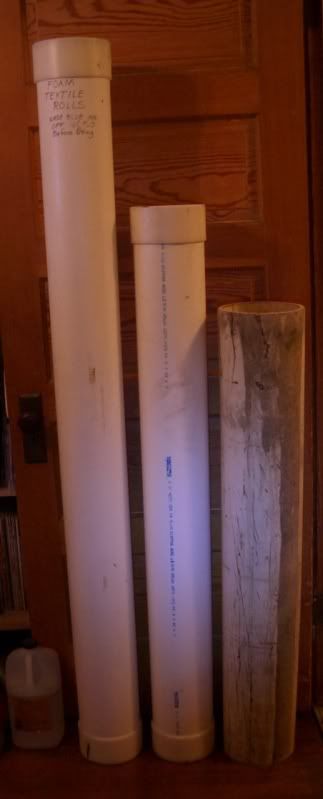
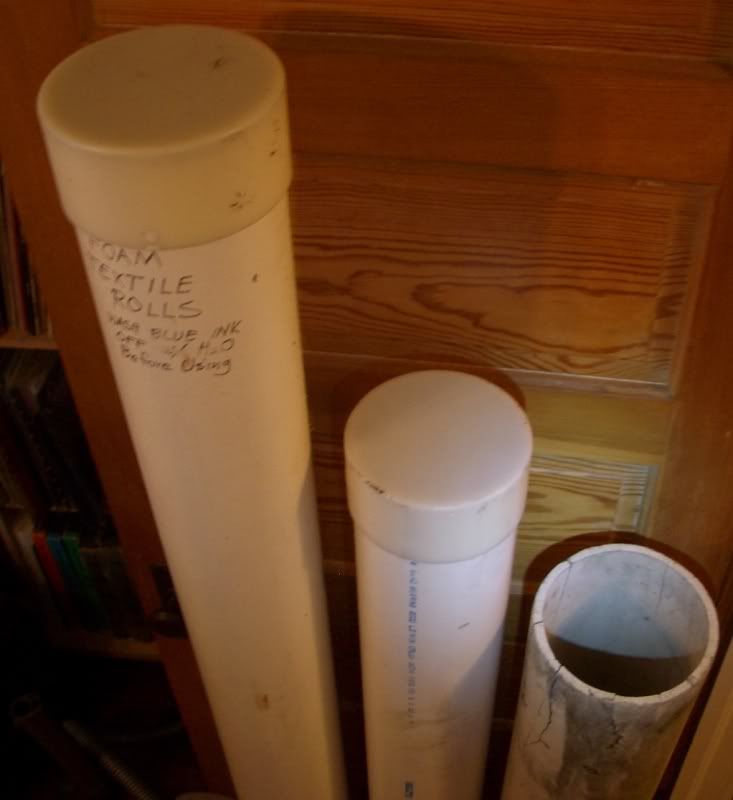
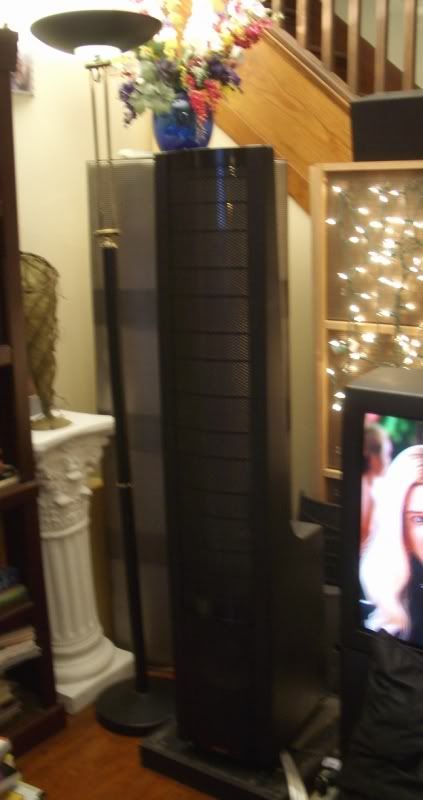
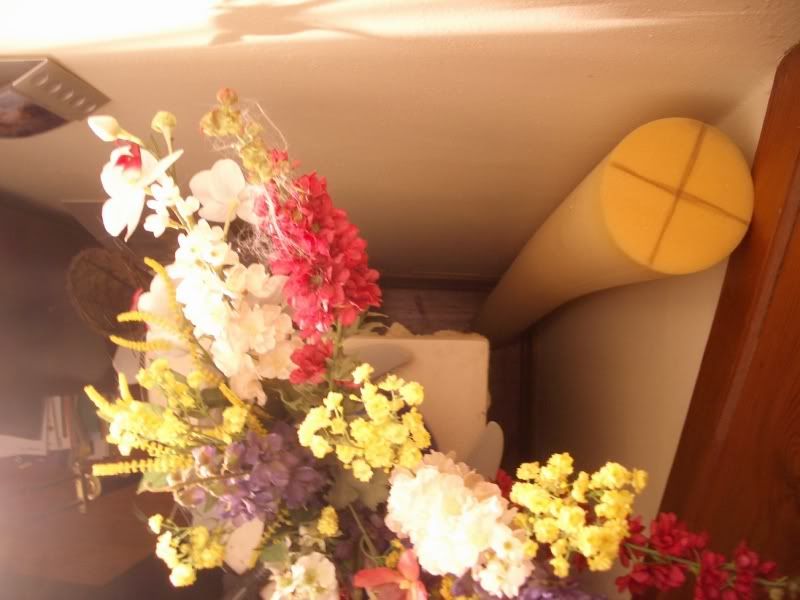
The foam tube with the "X" is where the PVC tubes will go, that is unless a better location can be recommended.
The Situation
I have a problem with bass, not a bad one, lived with it for years, but I want to do something about it. The right speaker is in the middle of the room, the left in the corner. Stick my head in the left corner and it's bass rich, like my head is inside of a subwoofer.
The Parts
I've collected some PVC tubes, the two tall 6 inch diameter ones are medium thick/thin PVC, the tallest one is about six foot eight tall.
The end caps on the two tall tubes do not come off.
The shortest tube is 7 inch in diameter, fiberglass reinforced very thick and heavy but has some cracks in it near the ends.
In the Room
The quarter round absorber you see in the left corner is more of a diffuser. It is filled with fiberglass batt insulation, open front face, fabric covered with a layer of perforated metal over the fabric. The rear face is covered with 1/2" homasote fiberboard.
The Concept
The concept of a bass trap as I understand it is to allow long up to three foot wavelengths of bass energy into a hole or slot which opens up into a larger cavity. The wave of energy bounces around losing it's energy, and most of it cannot escape back out through the small hole or slot.
The Plan....pending your input
I plan to drill a 1/2" hole or larger in the top end of the two tall tubes. Then drill a 1/4" near the bottom in the side. Through this hole I will spay a modest amount of expanding spay insulation, to fill the lower 6-8 inches of the tube.
The short fat tube will be capped with some MDF plugs (glue, screw and caulk). A 1/2" hole in the top plate, near the bottom plate an entry hole for the straw for the expanding foam.
Placement/ Location
The three tubes will stand straight up behind the existing quarter round diffuser in the left corner.
My main Concern
My main concern is that holes in the top of the tubes will not work as well as placing the entry holes near the floor. I could turn my design upside down and place the entry hole in the side, maybe a foot off the floor. However I would not expect the full length of a deep bass wavelength to turn right angle like that.
Where I am at
I have not researched bass tube absorbers in many years. I will start a Google search as soon as I put another LP on. Please post any design links or plan links you find and which are related to this current project and the list of parts I have on hand.
Thanks everyone.




The foam tube with the "X" is where the PVC tubes will go, that is unless a better location can be recommended.
Last edited:




